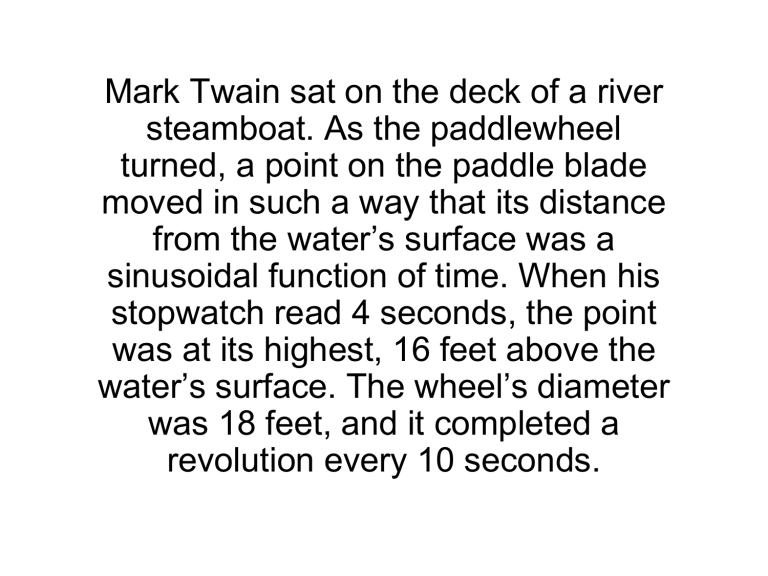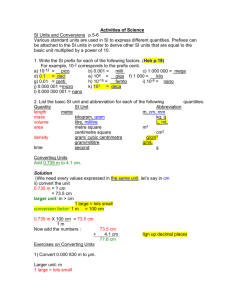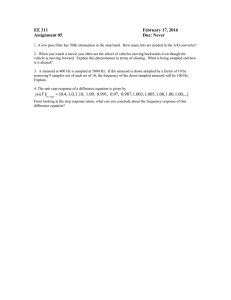example

Mark Twain sat on the deck of a river steamboat. As the paddlewheel turned, a point on the paddle blade moved in such a way that its distance from the water’s surface was a sinusoidal function of time. When his stopwatch read 4 seconds, the point was at its highest, 16 feet above the water’s surface. The wheel’s diameter was 18 feet, and it completed a revolution every 10 seconds.
Sketch a graph of the sinusoid.
18 ft
4 sec 16 ft (max)
One revolution every 10 sec.
10 y
Height
(ft)
4 8 12 16 x
Time
(sec)
Write equation of the sinusoid.
Period: 10 seconds per cycle
2
10 b b
5
Phase shift: Maximum starts at 4 seconds
Vertical Shift: middle of graph (16 + -2)/2 = 7
Amplitude: distance from middle of graph 16 – 7 = 9
(no reflection if starting at max)
Therefore, the equation is: y
9 cos
5
( x
4 )
7
How far above the surface was the point when Mark’s stopwatch read 5 seconds?
17 seconds?
By using the equation: y
9 cos
5
( x
4 )
7
We can plug in 5 and 17 into the x and solve for y (on calculator with trace or table)
When x = 5 sec , y = 14.3 ft
When x = 17 sec , y = 4.2 ft
What is the first positive value of time at which the point was at the water’s surface?
Find the intersection of y = 0 (water’s surface) and the sinusoid representing the paddlewheel.
Water’s surface











